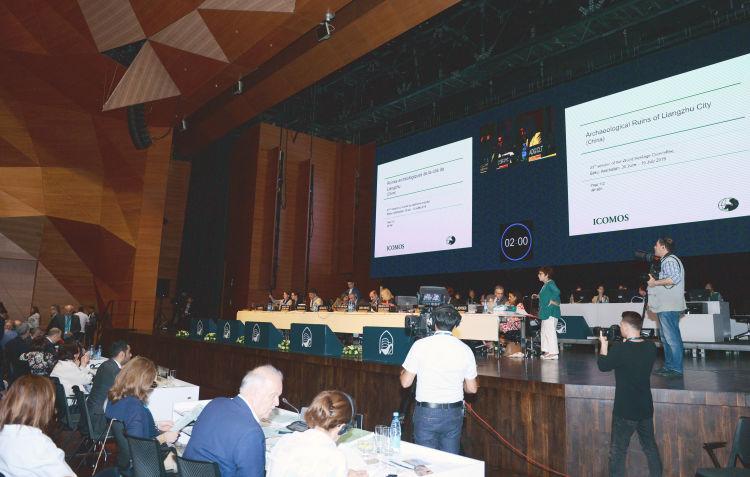BEIJING, July 7 (Xinhua) -- The Liangzhu relic site, Neolithic ruins in east China's Zhejiang Province, was inscribed on the World Heritage List on July 6 at the 43rd session of the World Heritage Committee with the United Nations Educational, Scientific and Cultural Organization (UNESCO) held in Azerbaijan's capital Baku.
The move makes China rank first in the world in terms of the total number of world heritage sites which stands at 55.
Located in Yuhang district of Hangzhou, provincial capital of Zhejiang, the relic site was an early regional national center for power and faith which is about 5,000 years old.
The relic site covers a heritage area of 14.3 square kilometers and a buffer of 99.8 square kilometers.
As a complex with various types of relics, it boasts a city site dating to 3300-2300 BC, a peripheral water conservancy system with complex functions, cemeteries of different grades (including altars) and unearthed objects represented by Liangzhu jade.
According to the World Heritage Committee, the relic site was an outstanding representative of the ancient Chinese urban civilization which truly shows the achievements of the great prehistoric rice civilization in China more than 5,000 years ago as well as the panorama of Liangzhu as a regional urban civilization in early Neolithic Period, meeting the requirements of authenticity and integrity for world heritage sites.
The scale, design and building technology of the peripheral water conservancy system displayed a scientific level rarely seen then in the world, making the system an outstanding example of the Chinese civilization and the development of prehistoric rice culture in East Asia 5,000 years ago as well as the early urban civilization in the history of human civilization, believed Zhang Junjie, director of the management committee of Liangzhu relic site.
The discovery of the site indicates that Liangzhu culture has entered the stage of mature national civilization, said Yan Wenming, a famous Chinese archaeologist, who believes that Liangzhu civilization is an evidence of the 5,000-year Chinese civilization and is totally comparable to the ancient civilizations in Egypt, Mesopotamia and India in terms of the amount of construction work, exquisite jade products and developed religious beliefs.
This has also been recognized by leading international archaeologists. Colin Renfrew, a famous archaeologist and a professor with the University of Cambridge, once noted that the complexity and class system of Liangzhu relic site have reached the "national" standard and it has pushed the origin of the Chinese national society to the same level as Egyptian, Mesopotamian and Indian civilization.
Yuhang district will continue to tap into the effective ways to inherit and utilize cultural heritage and make efforts to forge Liangzhu relic site into a model of national cultural and tourism integration, making it a destination for Chinese people to pay tribute to the Chinese history and civilization, said Zhang zhenfeng, member of the Standing Committee of the CPC Hangzhou Municipal Committee and Party chief of Yuhang district. (Edited by Gu Shanshan)




 A single purchase
A single purchase









